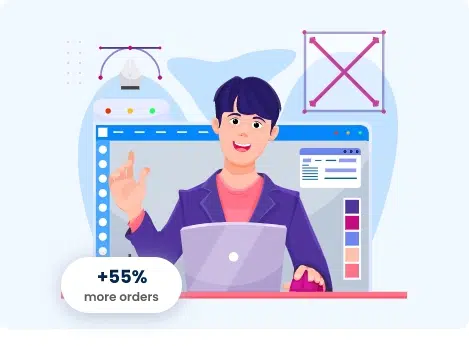In today’s fast-paced digital landscape, providing a seamless shopping experience is crucial for retail success. Consumers demand consistency and personalization across all touchpoints—whether they’re browsing online, in-store, or via a mobile app. Picture a customer starting their shopping journey on a mobile device during their morning commute, continuing on a laptop at work, and completing the purchase in-store—all without any disruptions. This is where a B2B omnichannel order management system (OMS) becomes indispensable. By integrating an e-commerce platform with a B2B OMS, retailers can deliver a cohesive and enjoyable shopping experience across all channels. This integration not only enhances the customer experience by catering to individual preferences but also optimizes backend operations.
For businesses, this means streamlined processes, reduced operational costs, and improved inventory management. An efficient B2B OMS allows retailers to focus on strategic growth and customer retention, ensuring that customers remain satisfied and loyal. Investing in a B2B omnichannel OMS is a strategic move that positions retailers to thrive in a competitive market by meeting and exceeding customer expectations.
Understanding Omnichannel Order Management Systems
which serves as a centralized hub for managing orders from a variety of sales channels. These channels include digital commerce platforms, physical retail locations, mobile apps, and marketplaces. Unizap ensures that inventory, order processing, and fulfillment are all synchronized across these channels, providing a cohesive view of both customer interactions and inventory levels. This synchronization helps retailers maintain a unified and efficient operation, ultimately enhancing the overall customer experience.
Benefits of Integration
Integrating an omnichannel Order Management System (OMS) provides several key benefits. It ensures a seamless shopping experience across platforms, such as starting on a mobile app and finishing on a desktop. Real-time inventory management minimizes overselling and keeps customers informed about product availability. The OMS optimizes order fulfillment by routing orders to the best fulfillment center, reducing shipping times and costs. It also enables personalized marketing through a unified view of customer data, allowing for targeted promotions. Finally, it streamlines operations by managing all orders, inventory, and customer data from a single platform, enhancing overall efficiency.
Key Considerations for Integration
Choosing the right Order Management System (OMS) is essential for enhancing omnichannel capabilities. Retailers should select a solution that integrates seamlessly with their existing e-commerce and digital commerce platforms, offering features like real-time inventory management, efficient order routing, and comprehensive customer data integration. Synchronizing data across all channels prevents overselling and ensures a consistent customer experience. The OMS should be scalable to support business growth and increased order volumes, enhance the user experience, and comply with data protection regulations to safeguard customer information.
Steps to Successful Integration
To successfully integrate an Order Management System (OMS), start by evaluating your current e-commerce platform and identifying your business’s specific needs to determine essential features and capabilities. Choose an experienced OMS provider with a proven track record and positive reviews that can seamlessly integrate with your platform. Develop a detailed integration plan outlining steps, timeline, and resources, including data migration, system configuration, and testing. Conduct thorough testing before going live to ensure the system works as expected, covering order processing, inventory updates, and customer data synchronization. Train your team on the new system and provide ongoing support to help them adapt. After integration, continuously monitor the system to identify issues and optimize performance using analytics and customer feedback for data-driven improvements.
Conclusion
Integrating an omnichannel Order Management System (OMS) provides several key benefits. It ensures a seamless shopping experience across platforms, such as starting on a mobile app and finishing on a desktop. Real-time inventory management minimizes overselling and keeps customers informed about product availability. The OMS optimizes order fulfillment by routing orders to the best fulfillment center, reducing shipping times and costs. It also enables personalized marketing through a unified view of customer data, allowing for targeted promotions. Finally, it streamlines operations by managing all orders, inventory, and customer data from a single platform, enhancing overall efficiency.
Implementing an omnichannel OMS alongside your e-commerce platform is a strategic move that can significantly improve customer experience and operational efficiency. This integration helps retailers meet modern consumer expectations and maintain a competitive edge, resulting in higher customer satisfaction and increased sales.







